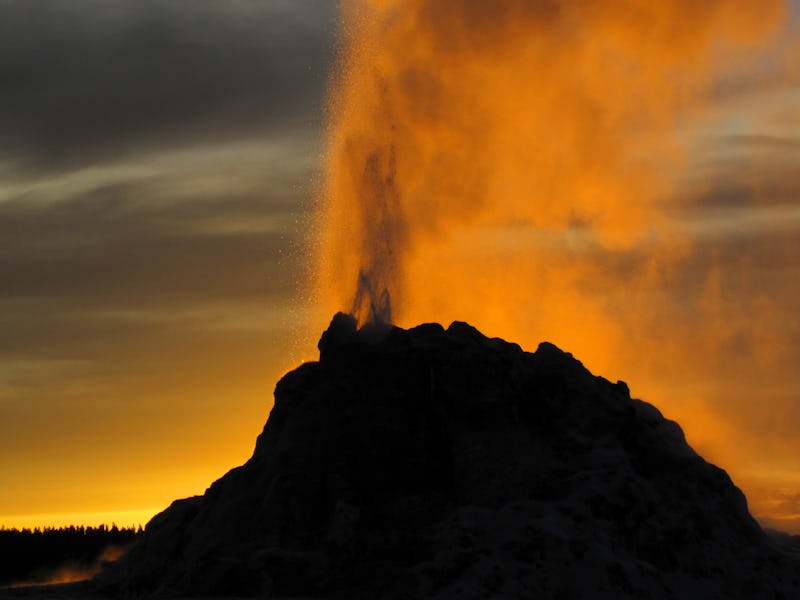Montana Earthquake Didn't Trigger Yellowstone Caldera -- But Could It?
"We would have warning if an eruption was building up."

An earthquake rocked Montana on Thursday just 230 miles from Yellowstone National Park, where an enormous, active supervolcano lies. Many who felt the tremors feared that they would set off the volcano that would put their lives in danger; luckily, there’s no danger of that happening from this 5.8-magnitude earthquake. But the alarm that echoed across social media raises the question: Could there ever be an earthquake strong enough to trigger the infamous Yellowstone Caldera?
The supervolcano will cause calamitous damage if it does erupt, a disaster about which doomsayers often obsess. Inverse spoke to some volcano and Yellowstone specialists to find out whether an earthquake could provoke this terrible scenario.
Volcanologist Rosaly Lopes thinks that the scenario is “unlikely.” Instead of an earthquake causing an eruption, “Usually it is the other way around,” she tells Inverse. “Earthquakes indicate that magma is [already] moving up and an eruption may occur.”
Yellowstone expert and geologist Steve Kluge agrees. “Pre-eruption earthquakes would be a RESULT of renewed activity, not the trigger of it,” he says.
This is only somewhat comforting. Earthquakes can’t cause volcanic eruptions, it seems; but they can portend one.
Yellowstone's White Dome Geyser, a sign of the volcano lying underneath.
But we know that the Montana quake, at least, doesn’t indicate a forthcoming Yellowstone disaster. If it did, there would be many other signs of an imminent eruption, like land warping and a continuous series of earthquakes.
Dr. Lopes describes the Yellowstone volcano as “very well-monitored.” She assures Inverse, “We would have warning if an eruption was building up.”
Thank goodness, because the Yellowstone volcano is terrifying: It’s erupted three times in the last 2.1 million years, and each instance was catastrophic, covering swaths of North America in ash and creating fault-forming basins that themselves led to later earthquakes. Its last eruption was 640,000 years ago.
A 2014 report in the journal Geochemistry, Geophysics, Geosystems described what would happen if Yellowstone flared again: On the North American coasts, the ash would “reduce traction on roads and runways,” “short out electrical transformers,” “cause respiratory problems”; in the Midwest, the ash would “disrupt livestock and crop production,” “threaten building integrity,” and “obstruct sewer and water lines.” The report also mentions flooding, additional “major climate effects,” and that “electronic communications and air transportation would likely be shut down throughout North America.”
Obviously, earthquakes are plenty dangerous on their own. Another that occurred in Montana in 1959 had a much stronger magnitude than Thursday’s (7.5) and killed 28 people. It didn’t lead to a volcanic eruption, but that fact probably came as little relief.